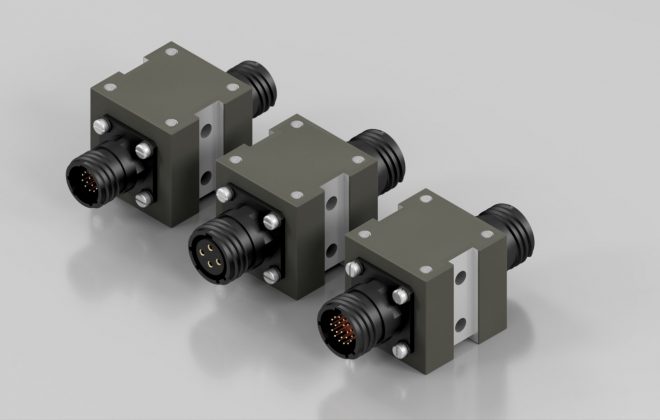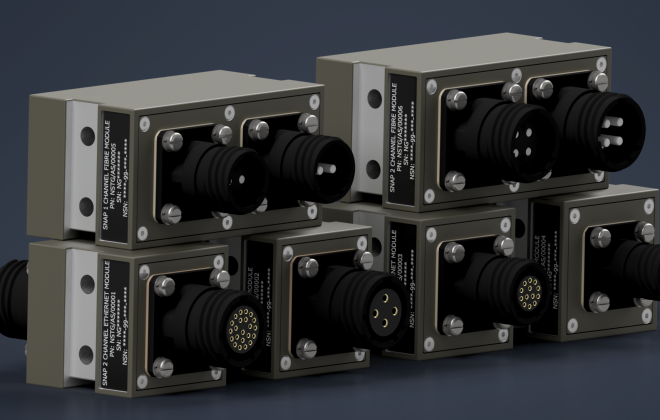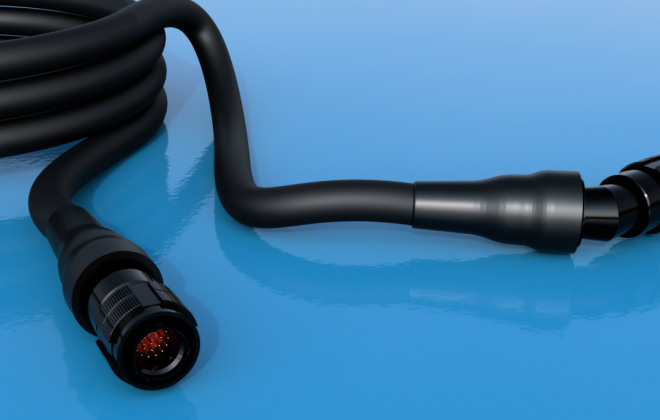Start of SNAP Design Phase 2
Phase 2 Objectives
This design phase has the following objectives:
- Design the remaining three modules:
- USB
- Fibre two channel
- Fibre four channel
- Produce more detailed design that takes into account the environmental requirements
- Update the lid design and insert conductive/waterproof gasket
- Addition of connector caps (as shown in image above)
- Addition of environmental gaskets on connectors
- Perform environmental stress analysis on SNAP, this will include multiple installation configurations
- Evaluate connector options to better deliver and ensure the signal integrity of the GVA interfaces, the evaluation will look at alternatives for the copper Ethernet as well as assess fibre connectors that meet the military environment but do not strictly conform to EN4531.
Module Design
At present the only SNAP modules that have been designed are the single/dual Ethernet and power modules. To complete the product family the USB, two and four channel fibre modules will be designed to the existing design baseline from phase 1.
The module design in phase 1 did not take into consideration the environmental proofing of the module. In this second phase of the design, the lid will be redesigned to incorporate an EMI and waterproof gasket to ensure that SNAP meets the requirements of DEF STAN 00-35. The connector fixing will also be updated to provide an environmental gasket on the rear of each connector and also the inclusion of connector caps, to ensure the integrity of the module when no cable connection is present.
Environmental Analysis
As well as updating the SNAP module design to meet DEF STAN 00-35, the design will also be stress tested when assembled in a patch panel.
The initial analysis will be conducted in CAD, with full testing being conducted later in the year. The analysis will include a number of panel layouts, from the simple to the most complex. If time allows the design will also be tested to destruction to show the limit of what is possible.
The results will be published at the end of June / start of July.
Connector Evaluation
I have never been a huge fan of DEF STAN 23-09 (GVA) from an interconnection view point. The connectors that have been specified are less than ideal when it comes to ensuring the integrity of Ethernet connections, so in this phase a number of options will be evaluated to ensure the connectivity of mission critical systems.
These alternative options will also increase the Ethernet data rate to 10Gbps as well as being backwards compatible to the lower 10BASE-T as defined in the standard. To ensure openness the full pinouts for the new modules that go beyond the GVA standard will be published and will not be deemed as proprietary.
After doing some digging this week, it turns out that the fibre connector defined in the GVA standard is a single source solution (only one manufacturer), this will potentially have negative impacts on the lead time and price of the connectors, which is less than ideal. There are military fibre connectors that are more than adequate for installing on land military platforms, these will be evaluated and put forward as potential alternatives to the GVA standard.
It’s going to be a busy few weeks completing the design and producing the environmental analysis. I will post more updates as I complete each objective.
As a one man band operation I will be looking for independent reviewers, to fully assess the design and drawings. If you would like to contribute leave a comment below of send me an email (noel@nstgengineering.uk).
Related Posts
Leave a Reply Cancel reply
Categories
- Annoucements (4)
- Cable Design (4)
- GVA Cables (1)
- Products (4)
- SNAP (3)




